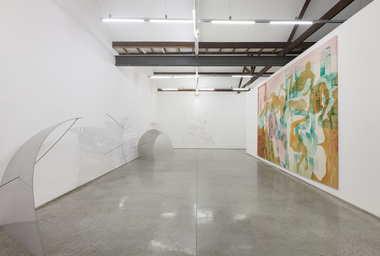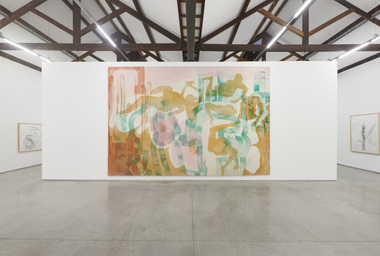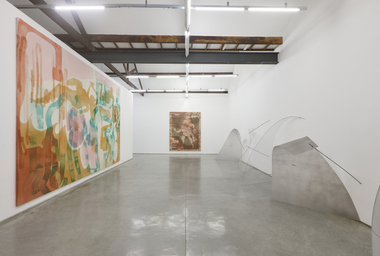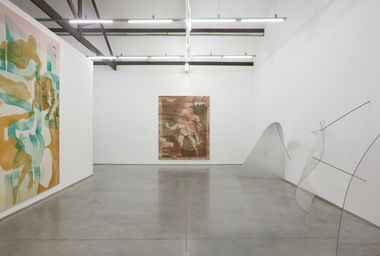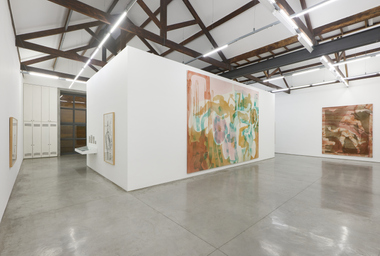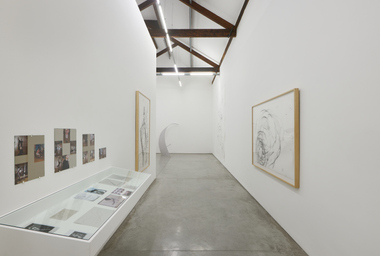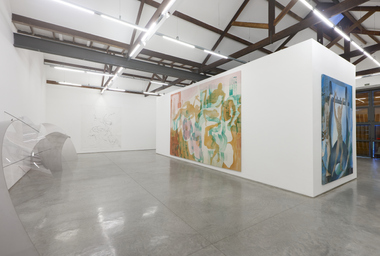
Iole de Freitas + Matthew Lutz-Kinoy + Trisha Brown
Feb 29 – Apr 27, 2024
Opening
Feb 29, 7 pm–9 pm
Carpintaria
Rua Jardim Botânico 971,
Rio de Janeiro
Directions
Download
The exhibition “Iole de Freitas + Matthew Lutz-Kinoy + Trisha Brown” opens on February 29th at Carpintaria, Rio de Janeiro, tracing paths between each artist, the visual arts and the expressive modes of dance. Drawings, paintings and sculptures form a web of relations between movement and rest, gesture and space, body and matter.
Since the 1980s, Iole de Freitas (1945 – ) has worked mainly in sculpture and installation. The Arruaças (2022), polycarbonate and steel sculptures on view do not weave a volume, nor do they complete each other; they are contorted planes in relation to the room, mutually interrupting one another. Each sculpture is autonomous, but this autonomy is in strict solidarity to the ambient situation constituted by the full set, just as the moving fabric of dancers draws attention to the distances between them, to the intervals and lapses between their syncopated movements. As if responding to invisible air currents, the Arruaças instate a network of latencies and possible directions
Trisha Brown redefined contemporary dance. In her choreographic devices, she blended rigid parameters with free improvisation to make clear how “movement reveals structures, and structures reveal movement”. Her project involved unmooring dance from the scenic configurations determined by the subordination of gesture to music. The works in this exhibition, large-scale drawings made between 2002 and 2006, were done in live performances, in the studio or on a stage. Brown translates the spontaneity and liquidity of improvisation into abstract charcoal graphisms, distributing indexical markings on paper; traces of physical expenditure.
In his work, Matthew Lutz-Kinoy frequently finds support in systems such as architecture, landscaping and the bodily arts to guide his compositions. Lutz-Kinoy has mentioned he borrows the idea of an aerial perspective, positioned directly above the space, from choreographers, allowing for a privileged vantage point for viewing moving bodies. The Red G Dances Under a Pink Roof (2023) illustrates this mode of perception particularly well, one that allows for seeing trajectories, transitions and relative distances in empty space, which appears as a reservoir of possible occupations.
The works in this dialog transcribe movement, impalpable and intangible, into matter. In an accumulation of syncopes, action becomes space.
